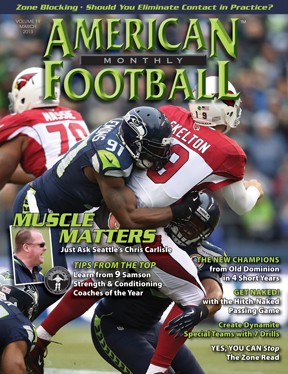Article CategoriesAFM Magazine
|
Defending the Zone Read –Defenses can be successful against the zone read if they understand the rules and their gap responsibilities.by: Rick ScheidtDefensive Coordinator, Fresno City College © More from this issue Defending the zone read is similar to defending the triple option that attacks the play side of the defense. We have specific rules for defending the dive (RB), the QB and the pitch. For the dive, we designate the first defender outside the offensive tackle to squeeze and tackle the first threat. The quarterback is designated for the area #2, the curl defender, which is usually the scraping linebacker. We always emphasize that our area #1, the curl/flat defender is responsible for the pitch. Defending the zone read is no different than defending the option. We emphasize the importance of a squeezing, attacking technique by our defensive linemen and tackling the first threat - the running back – on the back side of a zone blocking scheme. Our linebackers on the back side of a zone play are responsible for defending the quarter....The full article can only be seen by subscribers.
|
|
|||||||
| HOME |
MAGAZINE |
SUBSCRIBE | ONLINE COLUMNISTS | COACHING VIDEOS |
Copyright 2025, AmericanFootballMonthly.com
All Rights Reserved





